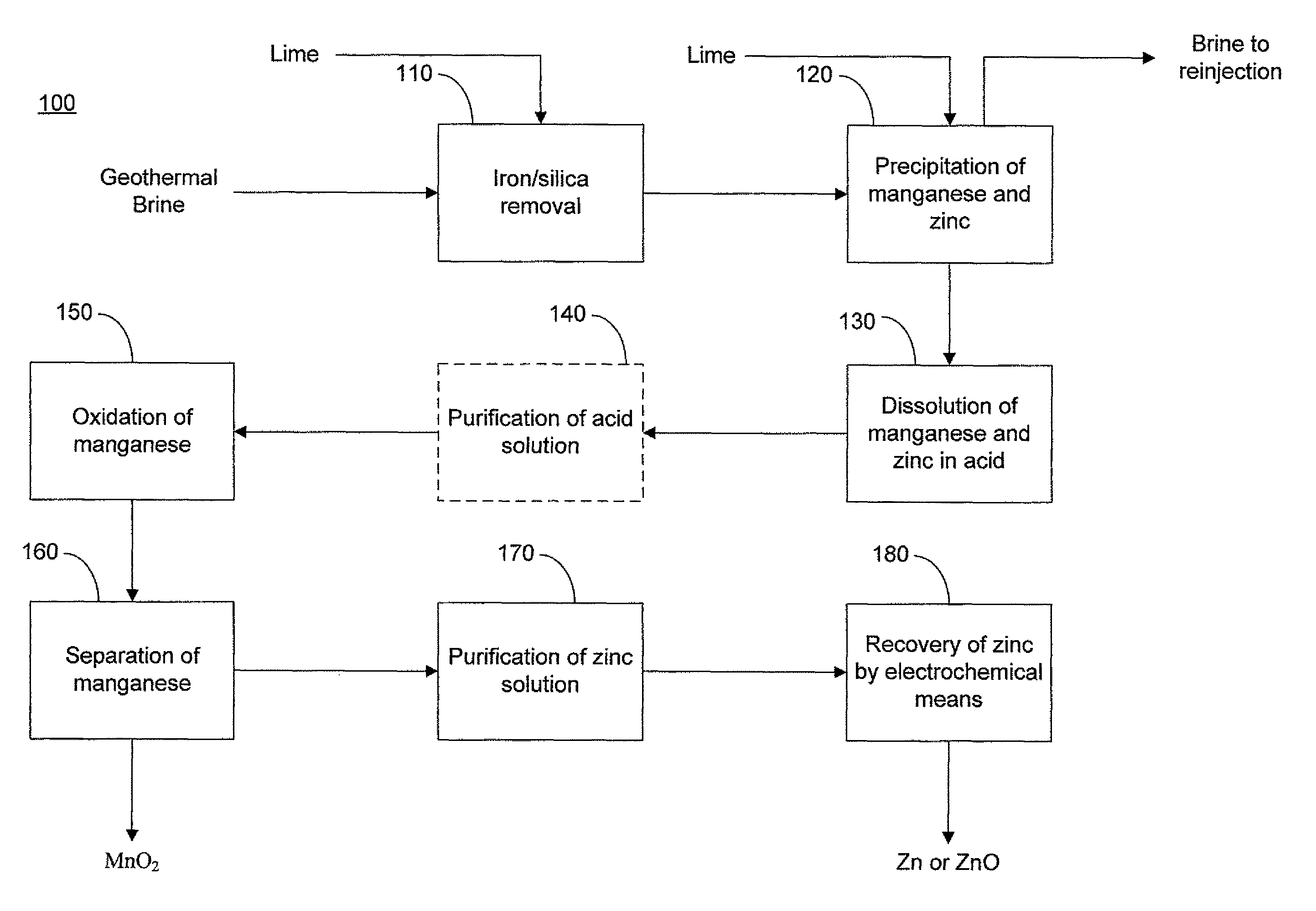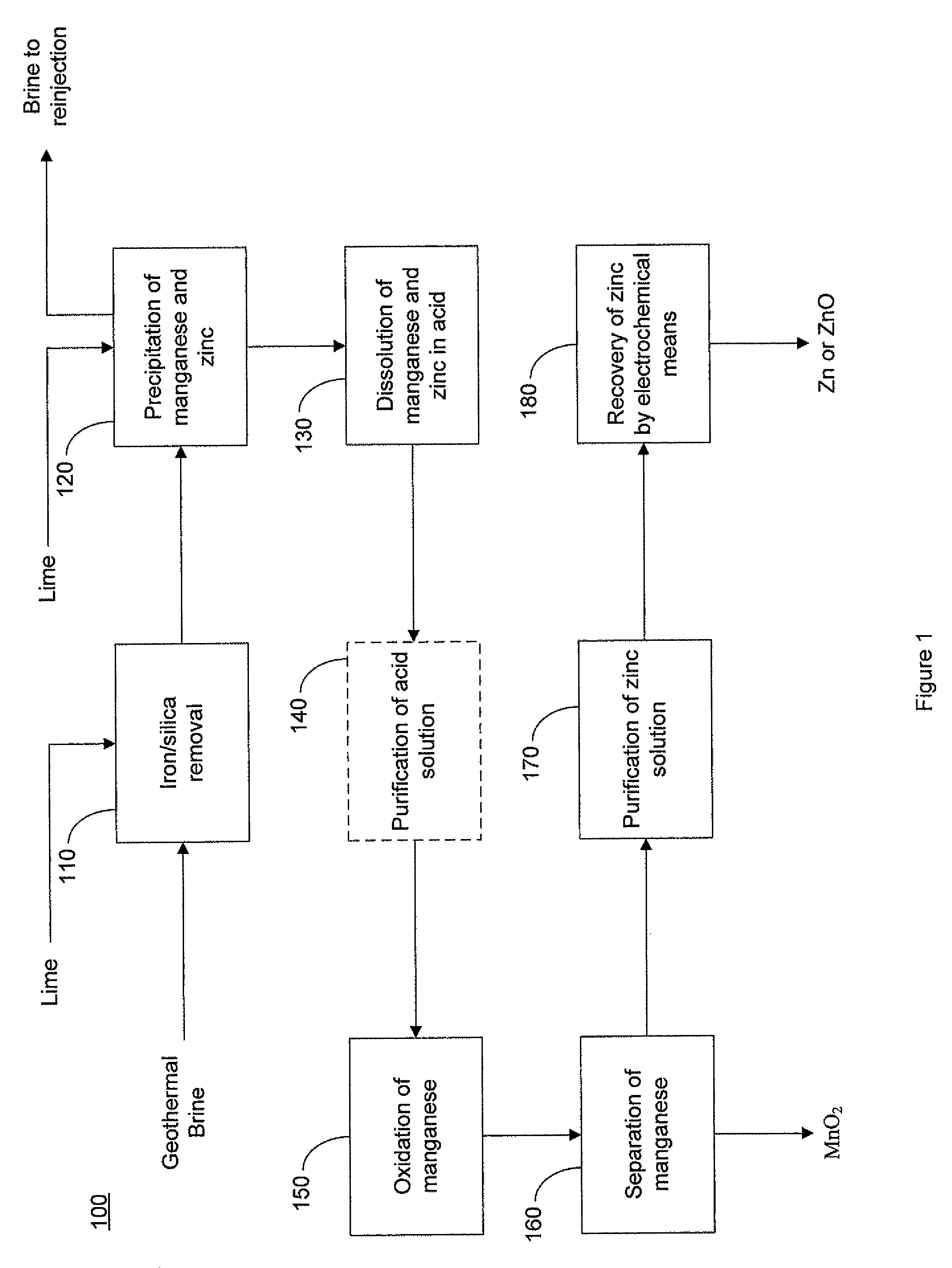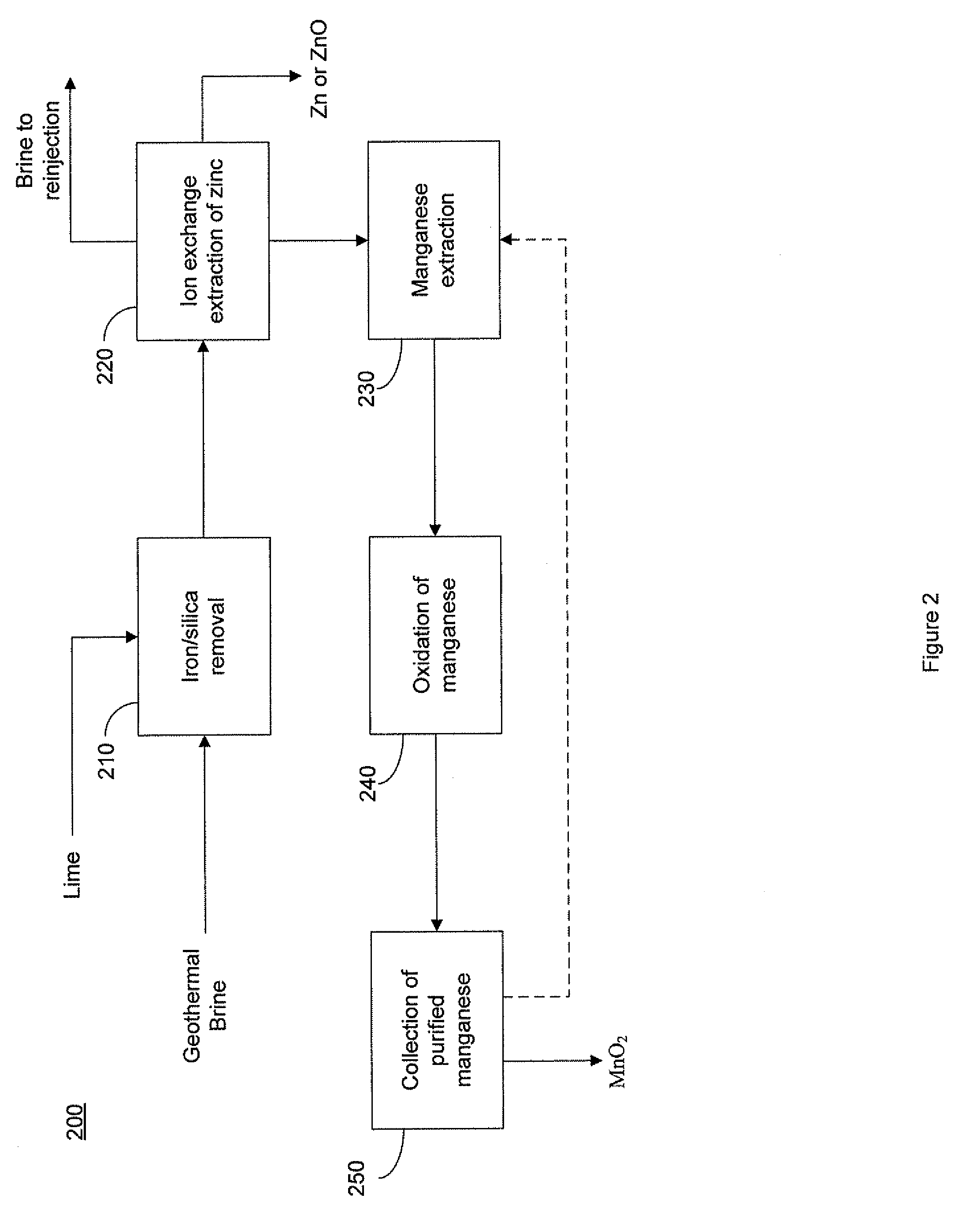Selective recovery of manganese and zinc from geothermal brines
a technology of geothermal brine and selective recovery, applied in the direction of electrolysis components, instruments, optics, etc., can solve the problems of increased recovery costs, scaling and deposition of solids, fouling of injection wells or processing equipment,
- Summary
- Abstract
- Description
- Claims
- Application Information
AI Technical Summary
Benefits of technology
Problems solved by technology
Method used
Image
Examples
example 1
[0096]Approximately 1.22 L of the synthetic brine was placed in a 2 L reactor and maintained at a temperature of between about 90-95° C. and sparged with air at a rate of about 2.25 L / minute. The initial pH of the brine was about 4.89. To the reaction approximately 14 g of a 20% slurry of calcium hydroxide added. After addition of the slurry, a pH of about 2.85 was achieved, which gradually increased to approximately 3.56 after about 10 minutes. After 40 minutes, at which time the pH was about 2.9, approximately 5.33 g of a 20% slurry of calcium hydroxide was added, which raised the pH to about 4.07. The brine and the calcium hydroxide slurry were mixed for approximately 30 min, during which time the pH decreased to approximately 4.0, at which time approximately 21.22 g of the 20% slurry of calcium hydroxide was added. The addition of the calcium hydroxide slurry increased the pH to approximately 4.5. The mixture was stirred for about another 20 minutes, after which approximately 28...
example 2
[0097]Approximately 1.32 L of the synthetic brine was placed in a 2 L reactor and maintained at a temperature of between about 90-95° C. and sparged with air at a rate of about 2.25 L / minute. The reaction was stirred for approximately 60 minutes and the pH of the solution was monitored. After about 60 minutes, a pH of about 2.05 was achieved. To the brine solution was added approximately 9.73 g of a 20% slurry of calcium hydroxide, which raised the pH to about 5.4. The brine and the calcium hydroxide slurry were mixed for approximately 30 min, during which time the pH decreased to approximately 3.4, at which time approximately 2.56 g of the 20% slurry of calcium hydroxide was added. The addition of the slurry increased the pH to approximately 4.9. The mixture was stirred for about another 20 minutes, after which approximately 1.21 g of the calcium hydroxide slurry was again added, and the pH increased to approximately 5.3. The reaction was allowed to stir for about an additional 70 ...
example 3
[0098]Approximately 1.32 L of the synthetic brine was placed in a 2 L reactor and maintained at a temperature of between about 90-95° C. and sparged with air at a rate of about 2.25 L / minute. The reaction was stirred for approximately 60 minutes and the pH of the solution was monitored. After about 22 minutes, a pH of about 2.52 was achieved. To the brine solution was added approximately 9.7 g of a 20% slurry of calcium hydroxide, which raised the pH to about 5.56. The brine and the calcium hydroxide slurry were mixed for approximately 13 min, during which time the pH decreased to approximately 4.27, at which time approximately 1.9 g of the 20% slurry of calcium hydroxide was added. The addition of the calcium hydroxide slurry increased the pH to approximately 5.2. The mixture was stirred for about another 5 minutes, during which time the pH decreased to approximately 4.49. Approximately 2.25 g of the calcium hydroxide slurry was again added, and the pH increased to approximately 5....
PUM
 Login to View More
Login to View More Abstract
Description
Claims
Application Information
 Login to View More
Login to View More - R&D
- Intellectual Property
- Life Sciences
- Materials
- Tech Scout
- Unparalleled Data Quality
- Higher Quality Content
- 60% Fewer Hallucinations
Browse by: Latest US Patents, China's latest patents, Technical Efficacy Thesaurus, Application Domain, Technology Topic, Popular Technical Reports.
© 2025 PatSnap. All rights reserved.Legal|Privacy policy|Modern Slavery Act Transparency Statement|Sitemap|About US| Contact US: help@patsnap.com



